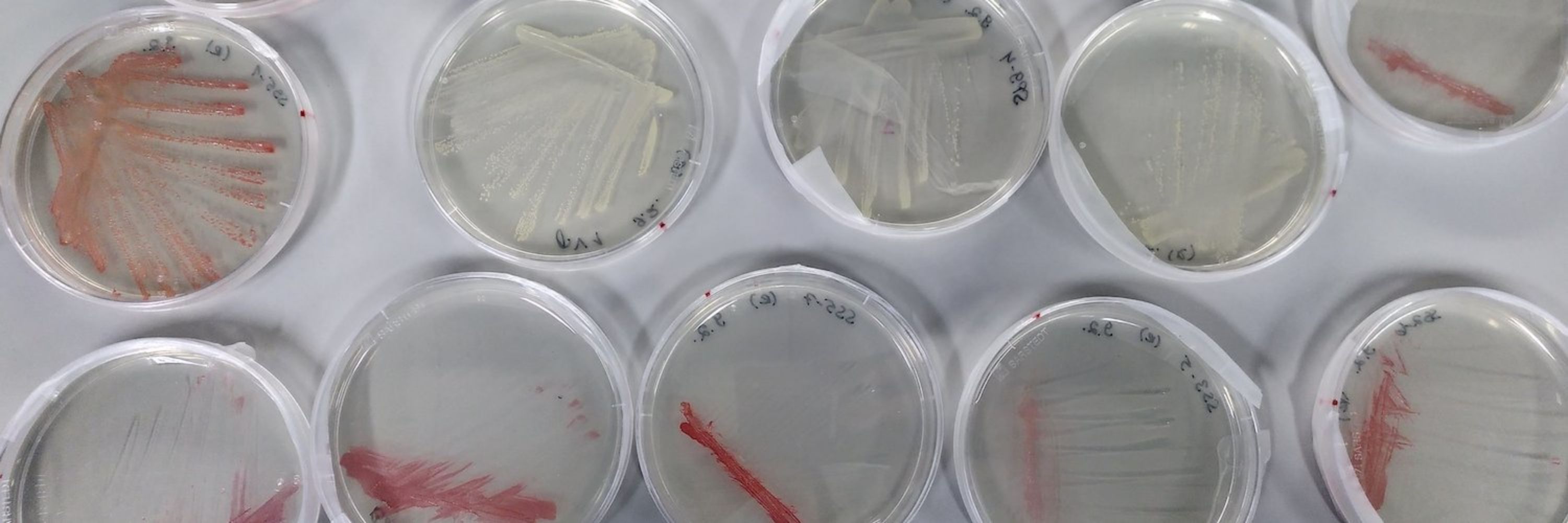
Romain Strock
@romainstrock.bsky.social
PhD student @ MRC LMS & Imperial College London. Evolution / bioinformatics & ML / microbiology. Current focus on conflicts between archaea and bacteria.
Not something we tested explicitly but the catalytic domains involved have not been shown to cleave pseudomurein. Also, very few pseudomurein producers encode PGHs, ruling out auto-lysis as the main function.
August 15, 2025 at 12:37 PM
Not something we tested explicitly but the catalytic domains involved have not been shown to cleave pseudomurein. Also, very few pseudomurein producers encode PGHs, ruling out auto-lysis as the main function.
PGHs are unlikely to be the sole kind of weapons deployed by archaea to kill bacteria. We close by discussing a road map to uncover more of the archaeal arsenal deployed against bacteria. Have a read for more details! 6/6
August 15, 2025 at 11:19 AM
PGHs are unlikely to be the sole kind of weapons deployed by archaea to kill bacteria. We close by discussing a road map to uncover more of the archaeal arsenal deployed against bacteria. Have a read for more details! 6/6
We experimentally show that two PGHs encoded by salt-loving archaeon Halogranum salarium B-1 do kill one of the predicted targets, salt-tolerant bacterium Halalkalibacterium halodurans. 5/6

August 15, 2025 at 11:19 AM
We experimentally show that two PGHs encoded by salt-loving archaeon Halogranum salarium B-1 do kill one of the predicted targets, salt-tolerant bacterium Halalkalibacterium halodurans. 5/6
We developed a structural homology-based pipeline to infer the putative bacterial targets of these proteins and found that most seem to target monoderm bacteria living in the same environment as the producer. 4/6

August 15, 2025 at 11:19 AM
We developed a structural homology-based pipeline to infer the putative bacterial targets of these proteins and found that most seem to target monoderm bacteria living in the same environment as the producer. 4/6
Here, we show that about 5% of archaea encode peptidoglycan hydrolases (PGHs) in their genomes, though most archaea do not use peptidoglycan. They are enriched on plasmids and display a high level of structural conservation with their bacterial counterpart, hinting at their use as weapons. 3/6

August 15, 2025 at 11:19 AM
Here, we show that about 5% of archaea encode peptidoglycan hydrolases (PGHs) in their genomes, though most archaea do not use peptidoglycan. They are enriched on plasmids and display a high level of structural conservation with their bacterial counterpart, hinting at their use as weapons. 3/6
Archaea and bacteria live in the same environments across the biosphere, yet only a handful of studies describe antagonistic interactions between the two domains of life (Atanasova et al., 2013 is particularly relevant). 2/6
August 15, 2025 at 11:19 AM
Archaea and bacteria live in the same environments across the biosphere, yet only a handful of studies describe antagonistic interactions between the two domains of life (Atanasova et al., 2013 is particularly relevant). 2/6

